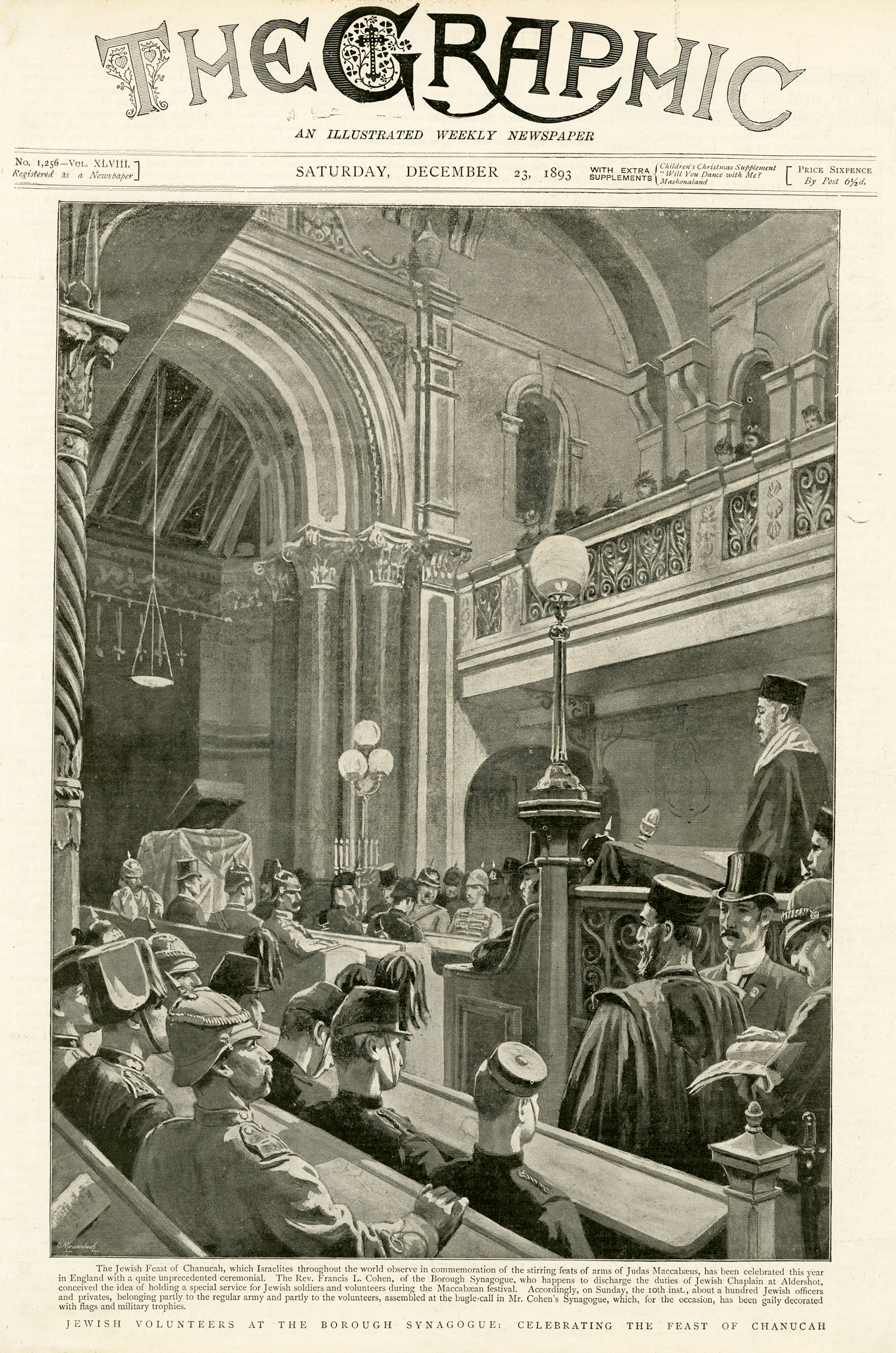This cover image of The Graphic illustrates an innovative public use of the Jewish holiday of Hanukkah in England to promote the idea of Jewish patriotism via participation in the armed forces. The print shows a special Hanukkah ceremony devised by Rabbi Francis L. Cohen (1862–1934) specifically for British Jewish soldiers and volunteers to honor and reward their military service, even in a period without the impetus of a major war. (The only war Britain was engaged in during 1893 was the First Matabele War, which took place in modern-day Zimbabwe and involved the British South African Company.) The holiday, which is celebrated as a reminder of religious steadfastness and a commitment to religious traditions, took on broader meanings in the late 19th century, incorporating themes of Jewish military prowess and national aspirations.
The accompanying text claims that around 100 Jewish officers, privates, and volunteers assembled for the service, suggesting that the number of Jews enrolled was not inconsiderable. “For the occasion [the synagogue had] been gaily decorated with flags and military trophies,” publicly and prominently lauding the soldiers’ commitment to their country. Rabbi Cohen, Great Britain’s first Jewish chaplain, made great efforts to encourage Jewish enlistment in the British Army and established this special service as an annual event. Here, Jewish commitment to the defense of the British Empire was emphasized; in the same decade, however, Zionists would begin employing the same celebration of Hanukkah to dramatize something else, the exploits of the Maccabees, as a call for the building of a Jewish nation in Palestine.
